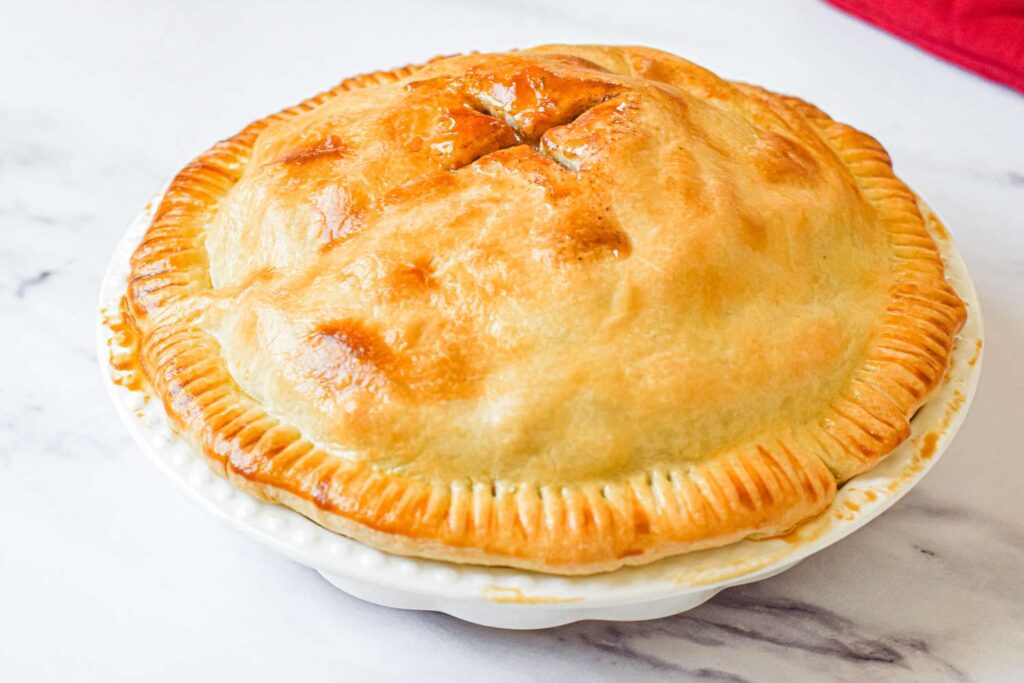Pies have long held a cherished place in the culinary traditions of cultures around the world. These versatile dishes come in countless forms, from sweet to savory, and offer a comforting, satisfying experience that transcends borders and generations. Whether enjoyed as a decadent dessert or a hearty meal, the pie remains a beloved staple that continues to evolve with time and taste. In this culinary journey, we’ll delve into the history, varieties, cultural significance, and creative possibilities of the pie.
The Historical Roots of the Pie
The origins of the pie trace back to ancient civilizations. Egyptians were among the first to develop early forms of pie, wrapping meat in oats or barley. The concept then traveled through history with the Greeks and Romans, who used a flour-and-oil paste as a vessel to cook and preserve meats. These early pies weren’t meant to be eaten; rather, the crust served as a cooking container.
By the Middle Ages, pies became more recognizable to us today. In England, savory meat pies grew popular, often made with game or poultry and encased in a thick, inedible crust known as a “coffin.” These pies were not only a food item but also a way to extend the life of perishable ingredients. Over time, recipes evolved to include more edible crusts, and both sweet and savory variations began to flourish.
The Art of the Sweet Pie
Few desserts stir nostalgia like a homemade sweet pie. In many countries, pies mark celebrations, holidays, and family gatherings. The sweet pie is defined by its flaky or crumbly crust and a filling made from fruits, custards, chocolates, or nuts.
One of the most iconic is the apple pie, often regarded as a symbol of American tradition. With spiced apple slices tucked inside a golden lattice crust, it captures the essence of home and heritage. Other fruit pies like cherry, blueberry, and peach are equally popular, their fillings oozing with natural sweetness and tartness.
Beyond fruit, there’s an entire realm of creamy and indulgent pies. Key lime pie, with its tangy citrus flavor and graham cracker crust, is a tropical delight. Chocolate silk pie, filled with rich mousse and topped with whipped cream, is a decadent treat. Pecan pie, a Southern U.S. favorite, features a gooey filling of corn syrup and toasted pecans baked into a buttery shell.
A World of Savory Pies
The savory side of the pie spectrum is just as impressive and arguably more ancient. Savory pies are typically associated with meals rather than desserts and often include meats, vegetables, cheeses, and hearty sauces.
In the United Kingdom, meat pies such as steak and kidney or chicken and leek are traditional comfort foods. Shepherd’s pie, though technically a casserole, mimics the layered concept of a pie with mashed potatoes on top and seasoned meat beneath.
Australia and New Zealand boast their own take on the savory pie, with handheld meat pies filled with ground beef, gravy, and sometimes cheese or onions—popular at sporting events and in bakeries. In South Africa, the bobotie pie combines curried meat with raisins and a creamy topping, while in Latin America, empanadas serve as a cousin to the traditional pie, often stuffed with spiced meats or vegetables and deep-fried or baked.
Cultural Significance of the Pie
The pie isn’t just food; it’s part of cultural identity. In the United States, Thanksgiving wouldn’t be complete without pumpkin pie. In the UK, mince pies are a staple of the Christmas season. Each region and tradition brings a different interpretation, yet all reflect the comforting essence of pie.
Pie-making is often passed down through generations, with recipes guarded and perfected over time. Grandmothers teaching grandchildren how to roll dough, cut vents, and crimp edges represent more than a culinary lesson—it’s a sharing of love, history, and heritage.
In many cultures, the pie also serves as a symbol of ingenuity. Its simple crust can transform leftovers into something new and delicious, and its portability makes it perfect for picnics, potlucks, or on-the-go meals.
The Craft of Making the Perfect Pie
Creating the perfect pie is both a science and an art. The foundation of any good pie is its crust. Whether it’s a buttery shortcrust, a crumbly graham cracker base, or a puff pastry, the texture and flavor of the crust should complement the filling inside.
The key to a flaky crust lies in cold ingredients and gentle handling. Overworking the dough can lead to toughness, while too-warm butter may cause the dough to lose structure. Bakers often chill their tools and ingredients to maintain ideal conditions.
The filling is where creativity shines. In sweet pies, choosing ripe, in-season fruit can enhance the flavor. Thickening agents like cornstarch or tapioca are used to prevent sogginess and keep the filling intact. In savory pies, proper seasoning and balance between protein, vegetables, and sauce are critical.
Pies in Modern Cuisine
As food trends evolve, so does the pie. Chefs around the world experiment with new ingredients, techniques, and presentations. Vegan pies using plant-based butters and nut fillings are becoming more common. Gluten-free crusts crafted from almond or rice flour cater to dietary restrictions while maintaining the spirit of the dish.
Mini pies, hand pies, and pie pops are gaining popularity for their novelty and convenience. These individual servings are ideal for parties and events, allowing for a variety of flavors without committing to a full slice.
Global flavors are also finding their way into traditional pies. Matcha custard pies, curry chicken pies, or coconut pandan pies reflect the fusion of cultures and cuisines that defines the modern food scene.
Why We Love Pie
There’s a reason pie holds such a beloved place in the hearts of many. It’s versatile, adaptable, and universally satisfying. The combination of crisp crust and luscious filling speaks to a primal enjoyment of texture and flavor. It’s no surprise that the pie continues to appear on menus from fine dining establishments to street-side bakeries.
Moreover, pie has a nostalgic quality. It reminds people of family, holidays, and comfort. That first slice, warm from the oven and fragrant with spices or herbs, is a moment of pure joy. Whether you favor fruit-filled desserts or savory meat-packed pastries, there’s a pie out there that feels like it was made just for you.
Conclusion
From ancient ovens to modern kitchens, the pie has journeyed through time and across continents, transforming with each culture it touches. It’s more than just a dish—it’s a culinary canvas, a vessel of history, and a symbol of warmth. Whether you’re baking one from scratch, sharing it with loved ones, or simply savoring a slice alone, the pie offers a timeless connection to comfort, creativity, and community.


